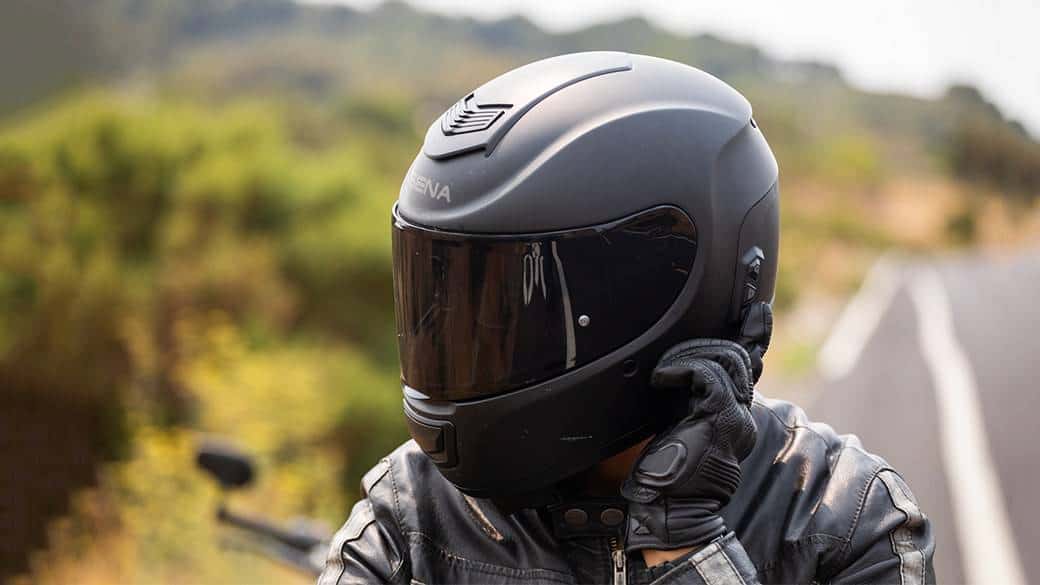Buying a new motorcycle is an exciting experience. But before you hit the open road, you’ll need to find a reputable motorcycle dealer. In this comprehensive guide, we’ll discuss the key factors to consider when looking for a dealer, as well as provide valuable resources and insights into the world of motorcycling. So, buckle up and let’s dive in!
Table of Contents
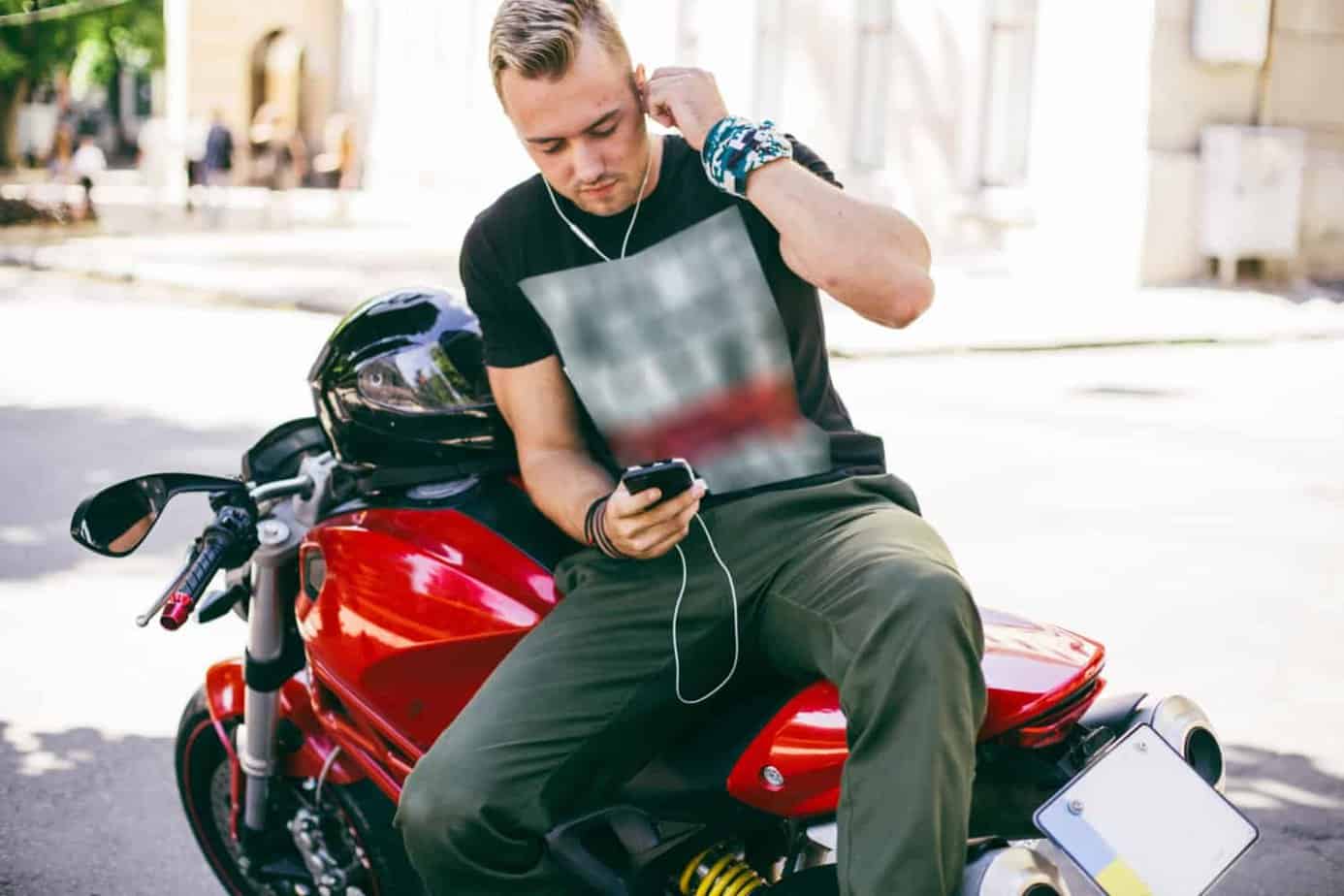
Buyer story at a motorcycle dealer
I walked into the dealership with a mix of excitement and nervousness, my stomach doing somersaults like an overenthusiastic acrobat. Today was the day I’d finally buy my first motorcycle. I had been dreaming of this moment for years, and now, it was finally happening.
As I entered the showroom, I couldn’t help but feel like a kid in a candy store. The shiny, polished motorcycles were lined up like beautiful, powerful mechanical steeds, each one begging me to take it for a ride. I could already imagine the wind in my hair and the envious looks from my neighbors as I roared down the street.
The salesman, a gruff, no-nonsense guy named Big Dave, approached me with a smile that seemed to say, “I know what you’re thinking, and you’re absolutely right.” He was the kind of guy who probably had motorcycles for breakfast and motor oil running through his veins.
“So, you’re here for your first motorcycle, huh?” Big Dave asked, as if reading my mind. “Don’t worry, I’ll make sure you leave here with the perfect ride.”
I told him what I was looking for – something easy to handle, not too expensive, and with enough power to make me feel like a superhero, but not so much that I’d accidentally launch myself into orbit.
Big Dave showed me a few models that seemed perfect for a beginner like me. As we walked around, I couldn’t help but feel a little overwhelmed by all the choices. It was like trying to pick a favorite child – if my children were made of metal and had exhaust pipes.
As I sat on each bike, I imagined the adventures I’d have – long road trips, weekend getaways, and even just the thrill of cruising around town. But with each one I sat on, I also felt the weight of responsibility. Owning a motorcycle was not just about looking cool and feeling the wind in my hair; it was also about being safe and responsible on the road.
Big Dave noticed my hesitation and gave me a reassuring pat on the back. “Hey, don’t worry. We’ve all been there. Just take your time, and remember, there’s no such thing as a perfect bike. You’ll grow and learn with whatever you choose.”
I finally narrowed my options down to two bikes: a sleek, black cruiser that made me feel like I was destined for the open road, and a nimble, red sportbike that seemed like it could zip through traffic with the agility of a hummingbird on steroids.
As I stood there, weighing the pros and cons of each bike, I noticed a group of seasoned riders in the corner of the showroom. They were laughing and joking, sharing stories of their riding adventures. I felt a sudden wave of envy, knowing that they had already experienced the thrill of riding.
In that moment, I made my decision. I turned to Big Dave and confidently said, “I’ll take the red sportbike. It’s time for me to start my own riding adventure.”
Big Dave grinned and slapped me on the back. “Excellent choice! You’re gonna love it. Just remember to take it easy at first, and always wear your gear.”
As I signed the paperwork, my excitement grew. This was it. I was finally part of the club, the elite group of people who knew the joys and freedom of riding on two wheels.
I left the dealership that day with my new red sportbike, feeling like I had just joined the ranks of motorcycle royalty. My heart raced as I started the engine for the first time, the purr of the motor sending shivers down my spine. I took a deep breath, put on my helmet, and reminded myself, “Easy does it.”
As I pulled out of the dealership and onto the road, I couldn’t help but let out a whoop of joy, sounding like a giddy teenager at a rock concert. The feeling of the wind rushing past me, the sensation of being one with the machine, was exhilarating beyond words.
Sure, I stalled the bike a few times at stoplights, and I may have taken a turn a little too wide, but I was learning. I was growing into my new role as a motorcycle rider.
That day, I didn’t just buy a motorcycle; I bought a ticket to a whole new world of adventure and camaraderie. I was no longer just a guy with a dream; I was a rider, a part of something bigger than myself. And I couldn’t wait to see where the road would take me.
Choose the Right Motorcycle Dealer
A great motorcycle dealer can make all the difference when purchasing your dream ride. Here are some essential aspects to consider when selecting a dealer:
- Knowledgeable Staff: The dealer’s staff should be experts in their field, ready to help you find the perfect motorcycle based on your needs and preferences.
- Wide Selection: A reputable dealer will offer a variety of motorcycles, including different makes, models, and types.
- Competitive Pricing: Look for a dealer that offers fair and competitive prices on their motorcycles and related products.
- After-Sales Support: A good dealer will provide ongoing support, including maintenance, repair services, and access to genuine parts and accessories.
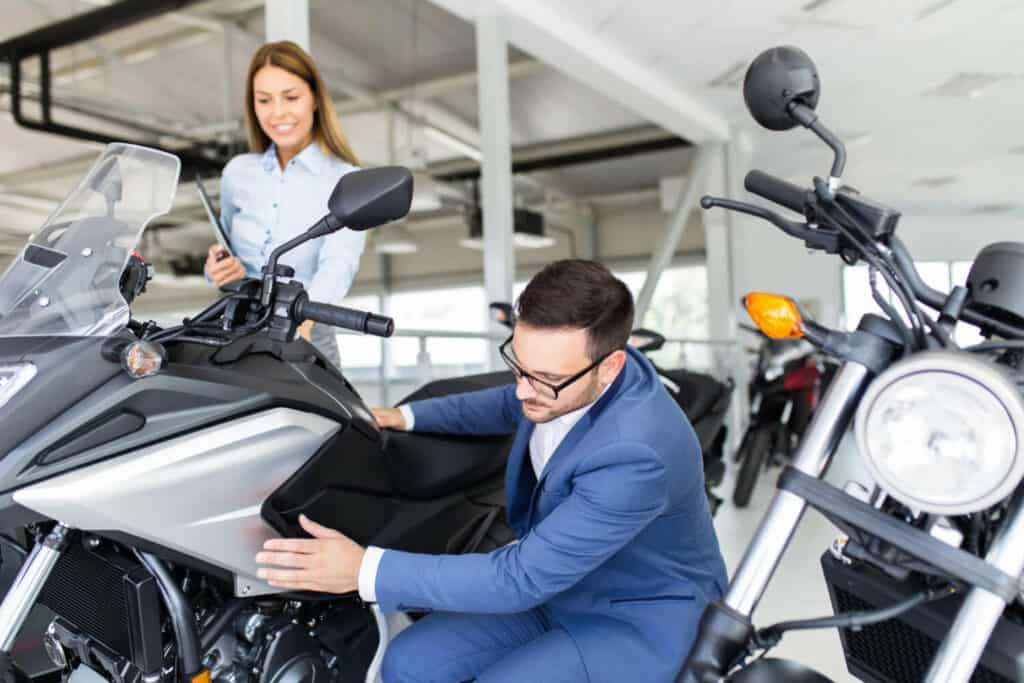
How to see if motorcycle dealer have a knowledgeable staff?
To determine if a motorcycle dealer has knowledgeable staff, consider the following tips:
- Online Reviews: Check online reviews on websites like Google, Yelp, or social media platforms where customers share their experiences. Look for comments that highlight staff expertise and helpfulness.
- Ask for Recommendations: Reach out to friends, family, or members of motorcycle clubs and online forums for recommendations on dealerships with knowledgeable staff.
- Visit the Dealership: When visiting the dealership, engage with the sales staff and ask questions about different motorcycle models, technical specifications, and riding recommendations. Pay attention to their responses to gauge their level of expertise and understanding.
- Observe Staff Interaction: While at the dealership, observe how the staff interacts with other customers. Are they attentive, patient, and eager to help? This can give you an idea of their knowledge and dedication to customer service.
- Inquire about Staff Training: Ask the dealership about the training and qualifications their staff members have received. A reputable dealer will invest in training its staff to ensure they can provide accurate information and advice to customers.
- Ask Technical Questions: Come prepared with a list of technical questions related to motorcycles, maintenance, or accessories. The staff’s ability to answer these questions knowledgeably and confidently is a good indicator of their expertise.
By taking these steps, you can better assess whether a motorcycle dealer has knowledgeable staff who can help you find the perfect motorcycle based on your needs and preferences.
How to see if motorcycle dealer offer competitive pricing?
To determine if your motorcycle dealer offers competitive pricing, follow these steps:
- Research Market Prices: Before visiting a dealership, research the average market prices for the specific motorcycle models you are interested in. You can check manufacturer websites, online forums, and motorcycle review websites for price information. This will give you a baseline to compare dealer prices against.
- Compare Multiple Dealers: Visit or call multiple dealerships in your area to inquire about the prices of motorcycles and related products. Take note of the offers and compare them to determine which dealer has the most competitive pricing.
- Check for Discounts and Incentives: Inquire about any available discounts, promotions, or financing options that the dealer may offer. These incentives can make a significant difference in the overall price of your motorcycle purchase.
- Consider Trade-In Value: If you plan to trade in your current motorcycle, research its market value and compare trade-in offers from different dealerships. A dealer with a competitive trade-in offer may provide better overall value for your purchase.
- Factor in Additional Costs: When comparing prices, don’t forget to consider additional costs like taxes, registration fees, and any optional extras or accessories. A dealer may offer a lower motorcycle price but have higher fees, making the overall cost less competitive.
- Negotiate: Be prepared to negotiate the price of the motorcycle with the dealer. If you have done your research and know the market prices, you’ll be in a better position to negotiate a competitive deal.
By following these steps, you can determine if your motorcycle dealer offers competitive pricing on their motorcycles and related products. Remember, while price is an important factor, it should not
How to negotiate at a motorcycle dealer?
Negotiating for a motorcycle at a dealership can be intimidating, but with some preparation and confidence, you can secure a fair deal. Here are some tips to help you negotiate:
- Do Your Research: Before visiting the dealership, research the motorcycle’s market price and any available discounts or promotions. Knowledge is power in negotiations, and being well-informed will give you the upper hand.
- Know Your Budget: Determine your budget beforehand and stick to it. This will help you avoid being swayed by the dealer to purchase a more expensive model or add unnecessary features.
- Get Multiple Quotes: Contact or visit multiple dealerships to inquire about their prices, trade-in offers, and financing options. Having a variety of quotes will give you leverage during negotiations and help you identify the best deal.
- Time Your Purchase: Dealerships may be more inclined to offer discounts and negotiate at the end of the month or during the off-season, as they may be trying to meet sales targets or clear inventory.
- Be Prepared to Walk Away: If the dealer is unwilling to negotiate a fair deal or meet your budget, be prepared to walk away. This may prompt the dealer to offer a better deal, or you can continue your search elsewhere.
- Negotiate on Extras: If the dealer is unwilling to budge on the motorcycle price, try negotiating on extras like accessories, extended warranties, or maintenance packages. This can still save you money and add value to your purchase.
- Trade-In Negotiation: If you have a trade-in, negotiate its value separately from the motorcycle’s price.
- Stay Calm and Polite: Approach negotiations with a calm and polite demeanor. Being respectful and professional can make the negotiation process more pleasant for both parties and may result in the dealer being more willing to offer concessions.
- Focus on the Out-the-Door Price: Make sure to negotiate the total out-the-door price, which includes taxes, registration fees, and other additional costs. This will give you a clearer understanding of the overall cost of the motorcycle and help you avoid any hidden fees.
- Financing Negotiations: If you’re planning to finance your motorcycle purchase, negotiate the interest rate and loan terms. A lower interest rate or better loan terms can save you money over time.
- Be Patient: Negotiations can take time, and it’s essential not to rush the process. Be patient and allow the dealer to consider your offers and counteroffers. Patience can pay off in securing a better deal.
- Put It in Writing: Once you have agreed on a deal, ask the dealer to provide you with a written agreement detailing the motorcycle’s price, trade-in value, financing terms, and any extras or warranties included. This will ensure that there are no misunderstandings or hidden fees when you finalize the purchase.
By following these negotiation tips, you can increase your chances of securing a fair deal on your motorcycle at the dealership. Remember, the key to successful negotiation is being well-prepared, patient, and confident in your approach.
How to check if the motorcycle dealer offers great after-sales support?
To make sure that your motorcycle dealer offers after-sales support, consider the following tips:
- Read Online Reviews: Check online reviews on websites like Google, Yelp, or social media platforms where customers share their experiences with dealerships. Look for comments that highlight the quality of the dealer’s after-sales support and customer service.
- Ask for Recommendations: Reach out to friends, family, or members of motorcycle clubs and online forums for recommendations on dealerships that provide excellent after-sales support.
- Inquire about Warranty: When visiting the dealership, ask about the warranty coverage offered on their motorcycles. A good dealer will provide a comprehensive warranty that covers parts and labor for a reasonable period.
- Ask about Maintenance and Repair Services: Inquire about the dealership’s maintenance and repair services. Do they have a service department staffed with certified technicians? Are they able to handle routine maintenance as well as more complex repairs? A reputable dealer will have skilled technicians who can provide quality after-sales support.
- Availability of Genuine Parts and Accessories: Ask the dealership if they stock and sell genuine parts and accessories for the motorcycle brands they carry. A dealer that offers genuine parts and accessories demonstrates their commitment to providing reliable after-sales support.
- Customer Support: Inquire about the dealership’s customer support channels. Do they have a dedicated phone line or email address for customer inquiries? Are they responsive and helpful when you have questions or concerns? Good after-sales support includes accessible and reliable customer service.
- Service Contract Options: Some dealerships offer extended service contracts, which can provide additional peace of mind and cover maintenance and repairs beyond the standard warranty period. Ask if they have any service contract options available for your motorcycle.
- Training and Workshops: Check if the dealership provides training or workshops for new motorcycle owners. This can be a sign of a dealer that is invested in their customers’ overall satisfaction and long-term riding success.
- Roadside Assistance: Inquire if the dealer offers any roadside assistance programs for their customers. This service can be valuable in case you experience a breakdown or require assistance while on the road.
- Courtesy Services: Some dealers may offer courtesy services, such as loaner bikes, shuttle service, or pick-up and drop-off services for customers who bring their motorcycles in for maintenance or repairs. These services can be an indication of a dealership that values customer satisfaction and after-sales support.
- Community Involvement: A dealer that is involved in the local motorcycle community, such as sponsoring events, hosting group rides, or supporting local clubs, is more likely to have a vested interest in providing excellent after-sales support to maintain their reputation.
- Visit the Dealership: Pay a visit to the dealership and observe how the staff interacts with customers. Are they attentive, knowledgeable, and helpful? Do they take the time to answer questions and address concerns? Your experience at the dealership can be a good indicator of the level of after-sales support you can expect.
By evaluating these factors and gathering information through research and direct inquiries, you can make an informed decision about the quality of after-sales support offered by your chosen motorcycle dealer. A dealership that values after-sales support will contribute to a more enjoyable and hassle-free ownership experience.

Essential Tips for Buying Your First Motorcycle
If you’re a beginner looking for your first motorcycle, it can be overwhelming to navigate the vast array of options. Here are some tips to help you make the right choice:
- Do Your Research: Before visiting a dealer, educate yourself on the different types of motorcycles available, such as cruisers, sportbikes, and touring bikes. This will help you understand what you’re looking for and make the process smoother.
- Set a Budget: Determine how much you’re willing to spend on a motorcycle and stick to your budget. Remember to factor in additional costs like insurance, maintenance, and gear.
- Consider Your Needs: Think about how you plan to use your motorcycle. Are you looking for a daily commuter or a weekend touring bike? Your intended use will help guide your decision-making.
- Start Small: As a beginner, it’s wise to start with a smaller, more manageable motorcycle. You can always upgrade to a larger bike once you’ve gained experience and confidence. Check out this guide on the best motorcycles for beginners.
- Test Ride: If possible, test ride multiple motorcycles to get a feel for how each one handles and to determine which one suits your riding style.
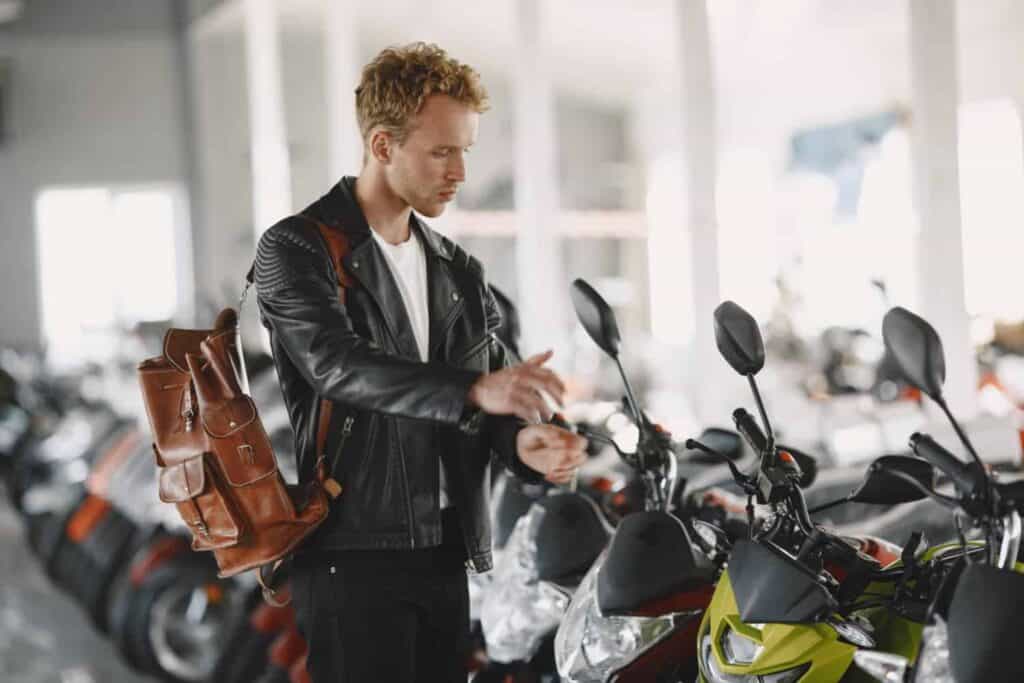
Statistics on buying a first motorcycle.
There isn’t a specific set of statistics that encompass all aspects of buying a first motorcycle. However, there are some general trends and facts related to beginner riders and first-time motorcycle purchases:
- Market Share: In the United States, entry-level and small-displacement motorcycles make up a significant portion of the market. According to data from the Motorcycle Industry Council (MIC), motorcycles with engine sizes below 600cc accounted for approximately 41% of the market in 2020.
- Age Demographics: Younger riders tend to be more likely to purchase entry-level motorcycles as their first bikes. According to MIC data, about 45% of Generation Z and 46% of Millennial motorcycle owners have bikes with engine sizes below 600cc.
- Rider Training: A considerable number of first-time motorcycle buyers participate in rider training courses. In the U.S., the Motorcycle Safety Foundation (MSF) offers the Basic RiderCourse, which is taken by hundreds of thousands of riders each year. This course is specifically designed for beginners, and many states require its completion for motorcycle license endorsement.
- Type of Motorcycles: Cruiser motorcycles are a popular choice among beginner riders due to their low seat height, manageable power, and user-friendly handling. However, other types of motorcycles, such as standard, adventure, and dual-sport bikes, also appeal to new riders depending on their preferences and intended use.
- Safety Gear: First-time motorcycle buyers are often advised to invest in proper safety gear, including a helmet, jacket, gloves, and boots. According to a 2021 study by the Insurance Institute for Highway Safety (IIHS), 71% of fatally injured motorcycle riders in the U.S. were wearing helmets.
While these points provide some general insights into first-time motorcycle buyers and beginner riders, it’s essential to remember that individual experiences and preferences can vary. When purchasing a first motorcycle, new riders should prioritize their comfort, safety, and the bike’s suitability for their intended riding style.
Must-Have Motorcycle Gear and Accessories
Equipping yourself with the right gear and accessories is crucial for a safe and enjoyable riding experience. Here are some essentials to consider:
- Helmet: A high-quality helmet is a must for protecting your head in the event of an accident. Learn how to choose the best motorcycle helmet.
- Protective Clothing: Invest in protective clothing, such as a motorcycle jacket, pants, and boots, designed to shield you from the elements and provide additional safety in case of a fall.
- Gloves: High-quality gloves not only improve grip and control but also protect your hands during a crash. Check out these Fox Racing Men’s Bomber Racing Gloves.
- Maintenance Tools: Keeping your motorcycle well-maintained is essential for its longevity and your safety. Consider investing in tools like a chain alignment tool and a cable luber to keep your bike in top shape.
- Navigational Aids: Equip your motorcycle with a phone mount or a GPS system to help you navigate your rides with ease.
- Emergency Equipment: Carry a first-aid kit and a tire repair kit for emergencies on the road.
Maintaining Your Motorcycle
Regular maintenance is crucial for keeping your motorcycle running smoothly and ensuring your safety on the road. Here are some essential maintenance tasks and resources to help you:
- Battery Maintenance: Regularly inspect and clean your motorcycle’s battery to ensure it’s functioning optimally. Check out this guide on motorcycle battery maintenance.
- Air Filter Maintenance: Clean and replace your motorcycle’s air filter as needed to maintain engine performance. Learn more about motorcycle air filter maintenance.
- Tire Inspection: Regularly inspect your tires for wear, damage, and proper inflation. Learn how to read motorcycle tire size and find the best adventure motorcycle tires.
- Oil Changes: Change your motorcycle’s engine oil and filter at the recommended intervals to keep your engine running smoothly.
- Chain Maintenance: Clean, lubricate, and adjust your motorcycle’s chain regularly to prolong its life and ensure smooth operation.
- Brake Inspection: Regularly inspect your motorcycle’s brake pads, rotors, and fluid levels for signs of wear or damage.
Motorcycle Riding Skills and Safety
Improving your riding skills and prioritizing safety are essential aspects of being a responsible motorcyclist. Here are some resources and tips to help you:
- Take a Riding Course: Enroll in a motorcycle riding course to learn essential riding techniques and safety practices. Read more about investing in your motorcycle driving skills.
- Practice Shifting: Mastering the art of shifting gears is crucial for smooth and efficient riding. Learn how to shift a motorcycle.
- Learn Proper Cornering: Understand the importance of body positioning, throttle control, and braking when navigating corners on your motorcycle.
- Ride Defensively: Stay alert and anticipate potential hazards while riding. Maintain a safe distance from other vehicles and avoid riding in blind spots.
- Improve Your Visibility: Wear brightly colored clothing or reflective gear, and use your headlights and signals to make yourself more visible to other road users.
Motorcycle Adventure and Camping
Motorcycle touring and camping can be a thrilling and fulfilling experience. Here are some tips and resources to help you plan your next adventure:
- Plan Your Route: Research your route in advance, including road conditions, weather, and points of interest. Learn about motorcycle camping and how many kilometers per day to plan for.
- Choose the Right Gear: Select lightweight, compact camping equipment that’s easy to pack on your motorcycle. Check out this list of motorcycle camping equipment and the Solo Stove Lite, which is an ideal camping stove for motorcycle adventures.
- Pack Efficiently: Organize your gear in a way that distributes weight evenly on your motorcycle and allows for easy access to essentials.
- Be Prepared for Emergencies: Carry a first-aid kit, tools, and spare parts for potential repairs or emergencies during your trip.
- Get to Know Your Motorcycle: Familiarize yourself with your motorcycle’s capabilities and limitations, especially if you plan on tackling off-road or challenging terrain. Explore the anatomy of an adventure motorcycle.
In conclusion, choosing the right motorcycle dealer is crucial for a satisfying and hassle-free buying experience. Research local dealers, consider essential factors, and equip yourself with the necessary gear and knowledge to make the most of your motorcycle adventures. Remember, safety and skill development should always be a top priority, whether you’re a beginner or a seasoned rider. Embrace the freedom and excitement that comes with owning a motorcycle, and enjoy the open road.
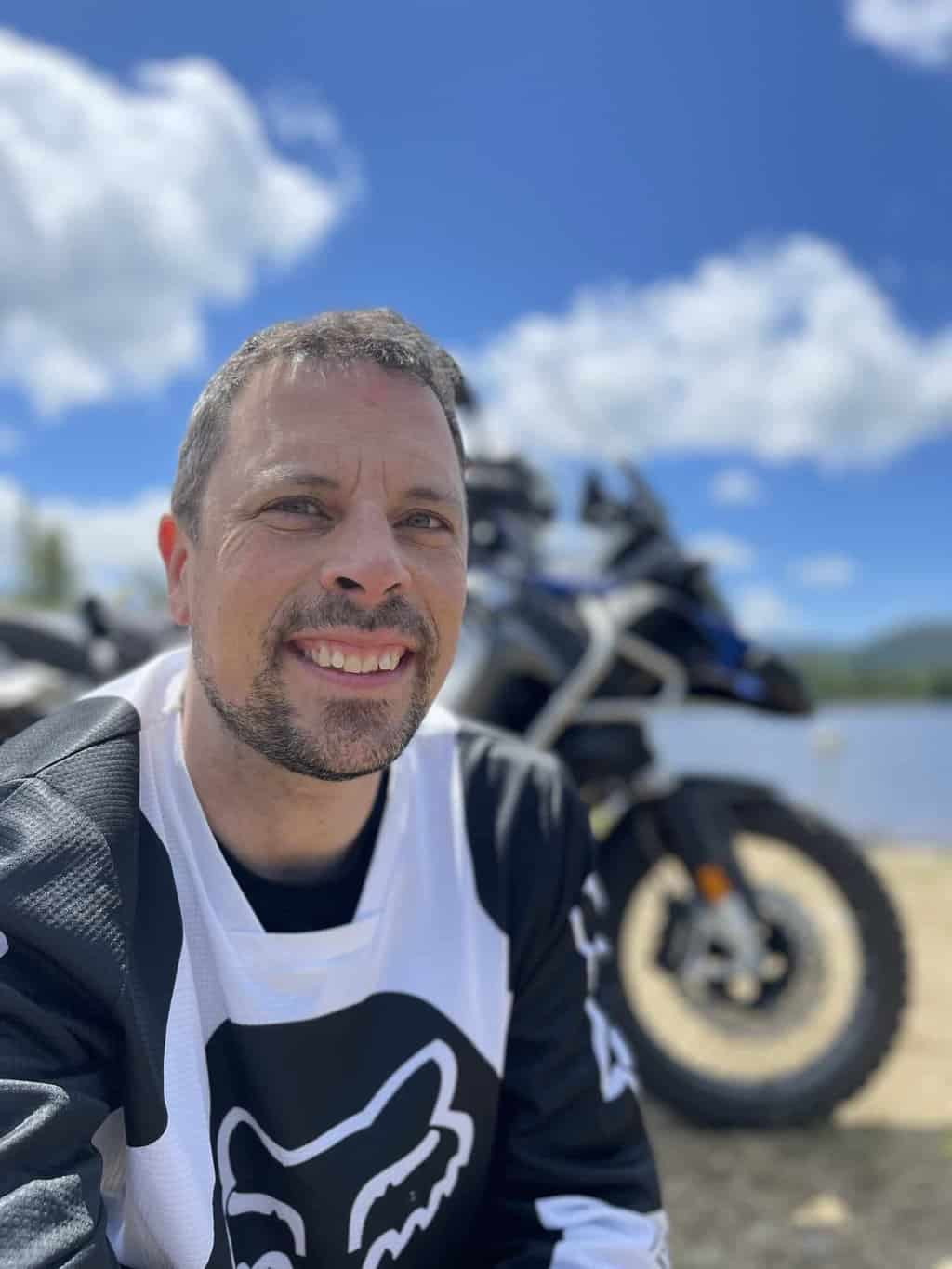
Meet Simon, the 46-year-old aficionado behind YourMotoBro. With a lifelong passion ignited by motocross dreams and a Canadian Tire bicycle, Simon’s journey has been nothing short of extraordinary. From coaching underwater hockey to mastering muddy terrains, he’s an authority in thrill and adventure. Certified as an Off-Road Vehicle Excursion Guide and trained in Wilderness First Aid, Simon’s love for bikes is as diverse as his collection—from a robust BMW GSA R1200 to the memories of a Harley Davidson Night Train. By day a respected telephony consultant, by night a motorcycle maestro, Simon’s tales are a blend of expertise, resilience, and undying passion. ?️✨
